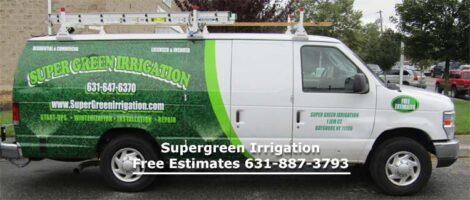The Ways to Improve Spray Head Performance
#1 Pressure Regulation
You can have the right controller and the right spray body, but if the system pressure is too high for your spray nozzle, you’ll end up wasting a lot of water. Usually you’ll see this in the form of fogging or misting, which atomizes the water and blows it onto sidewalks and hardscapes, greatly reducing the distribution uniformity of the nozzle. When the distribution uniformity of your sprays drops, you have to run the system longer to avoid dry spots.
The optimal psi for most fixed arc spray nozzles is 30 psi. For rotary nozzles, it’s generally 45 psi. Check the manufacturer’s specs to find the optimum pressure for the type of nozzle you’re using and then check the pressure of the system. When the pressure is too high for your nozzle, you need to pressure regulate.
According to Bernouli’s equation, every 5-psi reduction in pressure reduces water usage by 6-8%. This means a 70 psi system reduced to the recommended 30 psi can result in more than 50% in water savings. There are 4 main ways to regulate pressure in a system utilizing Rain Bird components:
- Get a pressure regulator for the entire system.
- Build a pressure regulator into the control valve.
- Install a Rain Bird PRS-Dial at the valve.
- Retrofit the existing Rain Bird 1800 spray bodies with P30 (for fixed arc nozzles) or P45 (for rotary nozzles) Pressure Regulating Spray Heads.
#2 Stop Low Head Drainage
If you’re working on a property that has sloped surfaces and you see water seeping out some of the heads, you likely have low head drainage. With low head drainage, every bit of water from the valve to the low head will be wasted every time the water is shut off, which is even more problematic if you’re cycle and soaking.
There’s two quick fixes for stopping low head drainage in Rain Bird 1800s:
- Put an under-the-head check valve in the spray body.
- Retrofit the spray with a head that has a built-in Seal-A-Matic (SAM) check valve. You’ll want to use 1800 SAM heads when the system is already operating at optimum pressure and 1800 SAM-PRS when you need both a check valve and pressure regulation.
#3 Use High Efficiency Nozzles
Getting higher distribution uniformity (DU) is very important if you want to reduce run times and the amount of water you’re using. You want the entire area to receive the amount of water it needs to maintain green lawns and colorful plants. No more, no less. The more uniform the water distribution, the shorter the run time will be for the driest spot.
If you’re having trouble with wind conditions, run-off, dry spots, or just want to save your customer water, you can retrofit 1800 sprays with a high efficiency nozzle like Rain Bird’s HE-VAN and R-VAN Nozzles.
HE-VANs are Rain Bird’s high efficiency variable arc nozzles. Because they adjust from 0˚ to 360˚, you can simplify the inventory you carry in your truck and HE-VAN’s lower trajectory and larger droplets resist wind so the water lands exactly where you want it. He-Vans have a DU of over 70%, which allows you to save water and deliver healthier turf, while shortening run times by up to 35% compared to traditional VANs.
R-VANs are Rain Bird’s high efficiency rotary nozzles. Reaching a distance of 13-24′, R-VANs are a great retrofit for poorly designed sprinkler systems where spray heads were spaced too far apart or the pipes are too small. Compared to spray arc nozzles, they can achieve a greater radius while using less water. Retrofitting standard spray nozzles with R-VANs can reduce flow by up to 60% and improve water efficiency by up to 30%. Nozzle spray pattern and distance can easily adjusted by hand. No tools required.
4. Plan for Overlap
Are you seeing brown spots around your spray heads? That’s an indication that you’re not getting good head-to-head coverage.
While it’s important to know the manufacturer’s catalog numbers, you shouldn’t rely on them 100%. The important thing to remember is that those numbers were created in a laboratory under perfect conditions. Things change when you get out in the field.
Give yourself some overlap. The IA recommends a foot overlap, but that might still be a little close. If you’re working with a system with 12′ spacing, use 15′ nozzles and then adjust the distance down.









